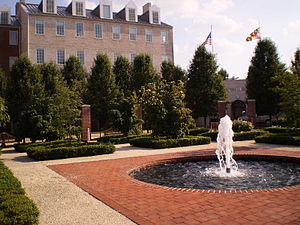The University of Maryland is testing a next-generation 911 application which runs on Android phones (soon to be expanded to BlackBerry’s and iPhones). The V911 app currently runs over the University on Maryland’s Wi-Fi network. When activated the app connects to the public safety dispatchers gving them the ability to have two-way communications with the caller and the ability to transmit video streams. The B911 app was developed in house by the UMD’s Ashok Agrawala.
Dispatchers will be able to take the information from the V911 app and combine it with other live information such as radio transmitions and security camera’s to make a larger picture for responding units. This not only gives them a better idea for what they are headed to but also what resources might be needed.
Initial beta testing was to begin in February with about a dozen users and then expand to a couple hundred about a month after students return from spring break.
Next-gen 911 app for Android includes video, audio and location with emergency calls
University of Maryland beta testing V911, which works via IP
- By Kathleen Hickey
- Feb 07, 2011
The University of Maryland soon will begin beta testing a next-generation 911 application, V911, which will run on Android phones, later expanding to iPhones and BlackBerrys.
The application, which will run over the university’s wireless network, will allow public safety dispatchers to see and hear what is happening at the site of an emergency call and identify the phone and its location, reported Emergency Management.
“When you hit the V911 app, it connects to us, it pops up, the dispatcher sees it and they can hear it and they can communicate with the person via voice two-way communication,” said Jay Gruber, UMD’s assistant chief of police, in the article. “It doesn’t go through 911 like a standard phone call. It’s going to be directed to the IP address here at public safety.”
Cell phone users will be able to contact a dispatcher at the touch of a button.
Related coverage:
Next Generation 911 systems get going again
The application also will allow dispatchers to see the location and capabilities of nearby first responders, assign them to an incident, and send them the audio and video streams, said Ashok Agrawala, director of UMD’s Maryland Information and Network Dynamics Lab and development leader for the project. First responders will be able to combine multiple feeds from an incident or area into a single window. The additional communication will require officers to have a GPS antenna connected to their computers in their patrol cars.
Dispatchers at a center security operations center will continue to have the ability to continue monitoring the situation from their locations, Agrawala said. “At that point, these are extra eyes that can alert the officers for responding or whichever way they want to use that,” he said.
Dispatchers will monitor about 700 security cameras from their location. Data from the application will be recorded for further action or review.
The plan is for the application to be free to students and other members of the university community. Developers of the application expect the cost to be covered by wireless carriers by the time it’s released.
Gruber expects to begin beta testing with about a dozen users in the middle of February, with the pilot program expanding to a couple hundred users four to six weeks after the university’s March spring break. He expects the application to be generally available at the beginning of the fall semester in August.
The V911 project began in 2008 and its basic functionally was initially debuted at the university’s Maryland Day in 2009. However, the project was halted due to lack of funding, Agrawala said in an e-mail exchange with GCN.
“We have demonstrated at the Maryland Day last year the basic functionality,” he said. “That included the streaming video and audio from a smart phone to the dispatcher’s console and then forwarding it to a first responder’s machine. Now we have developed the operation support components needed to deploy it in practice.”
V911 is part of MyeVyu (pronounced “my view”), a set of cell phone and PDA software programs for public safety developed by and for the university that provides networking and information access capabilities and an emergency alerting system. Both are part of a larger mobility initiative, Agrawala said in a university release.
The one potential concern of the new system that Gruber mentioned is accidental calls. If dispatchers receive many of these, developers may consider requiring users to make a simple hand gesture to activate the program, he said.
SOURCE: GCN.COM
Related articles
- Crime tip: Don’t call 911 while planning your cunning crime (oldstersview.wordpress.com)
- Dauphin County 911 center ready to take over Harrisburg police dispatching, official says (pennlive.com)
- Lock Your Phones, Homies: The Worst Heist In History. Drug Dealers Get Arrest After Pocket Dialing 911! (bossip.com)



